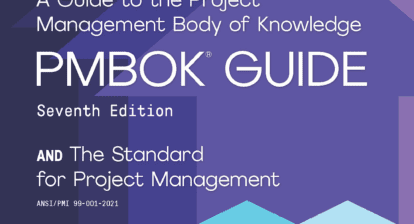![]() The U.S. Government Accountability Office (GAO) has published a manual of best practices to help federal, state and local agencies to assess the schedules for government projects. The “Schedule Assessment Guide: Best Practices for Project Schedules,” available online, provides guidance for civilian and defense projects managed by either government entities or private contractors.
The U.S. Government Accountability Office (GAO) has published a manual of best practices to help federal, state and local agencies to assess the schedules for government projects. The “Schedule Assessment Guide: Best Practices for Project Schedules,” available online, provides guidance for civilian and defense projects managed by either government entities or private contractors.
The new report uses content initially included in GAO’s March 2009 “Cost Estimating and Assessment Guide” and the draft “Schedule Assessment Guide” released for comment in 2012. The new 240-page document covers 10 best practices for developing and maintaining a reliable, high-quality schedule:
1. The schedule should capture all activities, as defined in the program’s work breakdown structure (WBS).
2. The schedule should be planned out so that critical program dates can be met. To do this, activities must be logically sequenced and linked — that is, listed in the order in which they are to be carried out and joined with logic.
3. The schedule should reflect the resources (labor, materials, travel, facilities, equipment and the like) for doing the work, whether they’ll be available when needed, as well as constraints on funding or time.
4. The schedule should realistically reflect how long each activity will take. When the duration of each activity is determined, the same rationale, historical data and assumptions used for cost estimating should be used. Durations should be reasonably short and meaningful and should allow for discrete progress measurement.
5. The schedule should be traceable both horizontally and vertically, meaning that it should link products and outcomes associated with other sequenced activities (horizontal); and data will be consistent between different levels of a schedule (vertical).
6. The schedule should identify the program’s critical path — the path of longest duration through the sequence of activities.
7. The schedule should identify reasonable total float (or slack) — the amount of time a predecessor activity can slip before the delay affects the program’s estimated finish date — so that the schedule’s flexibility can be determined.
8. A schedule risk analysis needs to start with a good critical path method schedule. Data about program schedule risks are incorporated into a statistical simulation to predict the level of confidence in meeting a program’s completion date; to determine the contingency, or reserve of time, needed for a level of confidence; and to identify high-priority risks.
9. Progress updates and logic should provide a realistic picture of start and completion dates for program activities.
10. A baseline schedule needs to form the basis for managing the program scope, the time period for accomplishing it and the required resources. The baseline schedule is designated the target schedule and is subjected to a configuration management control process. Program performance is measured, monitored and reported against the baseline schedule.
The guide includes extensive explanation for each practice as well as checklists and 19 separate case studies that illustrate how best practices can be applied.
“A well-planned schedule is an essential tool for program management,” said Gene Dodaro, comptroller general of the United States and head of the GAO, in a statement. “The best practices described in the guide are intended to help agencies create and maintain schedules that are comprehensive, well-constructed, credible and controlled.”
The “Schedule Assessment Guide: Best Practices for Project Schedules” is available for download from the GAO website here.







